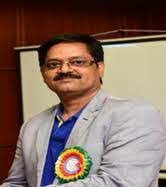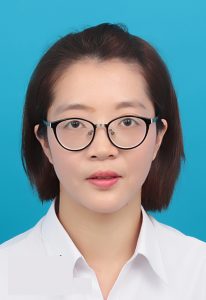Steven Li
Swansea University
Bio:
Steven received the B.E. degree from Hefei University of Technology, China, the M.E. degree from University of Science and Technology of China, China, in 2008, and the Ph.D. from Stevens Institute of Technology, Hoboken, NJ, USA. He is currently a professor at Swansea University, UK. His current research interests include dynamic neural networks, wireless sensor networks, robotic networks, machine learning, and other dynamic problems defined on a graph.
Abstract:
This talk summarizes our research in the recent ten years on the topic of using artificial intelligence as a tool to empower mechatronic systems, especially robotics systems. Different from existing works, we incorporate the safety constraints, and physical constraints into consideration. In addition, for robots, a typical mechanical system, we can easily obtain its model, which motivates us to think: Is it possible to design a model based neural network, for which the weights are obtained from the robot model rather than from data? We first established the equivalent representation of the problem. However, the solution requires time consuming operations. We then designed a model based recurrent neural network with simplified structures, which can be calculated in real time. We rigorously proved the global convergence and optimality of this model. Based on these fundamental results, we further extend the model to consider acceleration constraints, force/motion planning, obstacle avoidance, manipulability optimization, and cooperative control with multiple robot arms, simultaneous task allocation and robot motion planning.
 Suresh Chandra Satapathy
Suresh Chandra Satapathy
Professor & Dean (Research), School of Computer Engg, KIIT Deemed to be University, Bhubaneswar
Bio:
I am a Ph.D in Computer Science Engineering, currently working as a Professor of School of Computer Engg and Dean- Research at KIIT (Deemed to be University), Bhubaneshwar, Odisha, India. I held the position of the National Chairman (Educational and Research) of Computer Society of India and am also a senior Member of IEEE. I have played an integral role in organizing more than 60 International Conferences in India as the Organizing Chair and edited more than 80 Book Volumes from Springer LNCS, AISC, LNEE and SIST Series as a Corresponding Editor. I am active in research in the areas of Swarm Intelligence, Machine Learning, Data Mining and Cognitive Sciences. I have developed three new optimization algorithms known as Social Group Optimization (SGO), published in Springer Journal, SELO( Social Evolution and Learning Algorithm) published in Elsevier and Past Present and Future (PPF algorithm) in Springer. I have delivered a number of Keynote addresses and Tutorials in my areas of expertise in various events in India and abroad. I have more than 150 publications in reputed journals and conf proceedings. I am also a part of the Editorial board of IGI Global, Inderscience, Growing Science journals and also a Guest Editor for Arabian Journal of Science and Engg published by Springer. I am also the Editor-in-Chief of IJIDSS from Inderscience and Associate Editor of KES Journal from IOS press. I have been invited to and visited a number of reputed Universities like University of Leicester , London, NTU, Singapore, Duy Tan University, Vietnam, etc for delivering lecture and collaboration. I was awarded the Leadership in Academia Award in India by ASSOCHEM for the year 2017.
Title: Social Group Optimization : Analysis, Modifications and Applications
Abstract:
Real world problems are complex in nature which needs intelligent algorithms to be solved. Evolutionary Algorithms (EAs) are a group of intelligent algorithms which are used to find optimal solutions to non-polynomial time solvable problems in feasible time. According to “No Free Lunch theorem”, no evolutionary algorithm could be claimed to solve all types of optimization problems, and that has paved way for emergence of new evolutionary algorithms. Social Group Optimization (SGO) is an EA based on social behavior of human beings. It has performed well in various optimization and real-world problems. The algorithm has an advantage of having only one control parameter ‘C’, i.e. self-introspection parameter, which is actually good, as dealing with too many control parameters increase the computational complexity. Moreover, SGO algorithm is based on a very simplified approach i.e. Random walk based on the best candidate solution and the fitness value of a randomly chosen candidate solution. No complex techniques are involved in SGO, which makes it easier to be understood by the researchers of other fields and hence appropriate for easy applications. The stability analysis of SGO has been performed through Von Neumann technique which ensures the convergence of SGO theoretically as well as experimentally within a range of values of the different parameters. Further, some suitable modifications have been performed to make SGO applicable to different domains. Also these modified algorithms has been applied to some niche areas and to some popular problems, in which a competitive performance of these variants of SGO, have been observed.
 Shuihua Wang
Shuihua Wang
Bio:
Dr. Shuihua Wang focuses on Machine learning, Deep learning, Image processing, Information fusion, and Data analysis. She has published ~100 high-quality papers in peer-reviewed international journals and conferences in these research areas. So far, she has successfully secured several external funding and supervised ~15 graduate students. She is rewarded as 2019, 2022 Highly Cited Researcher by Clarivate and 2020, 2021 Highly Cited Chinese Researcher by Elsevier.
She serves as a professional reviewer for many well-reputed journals and conferences including IEEE TCSVT Neuron Computing, Pattern Recognition, and so on. She serves as Guest Editor of Information Processing and Management, IEEE JBHI, IEEE/ACM Transactions on Computational Biology and Bioinformatics and Measurement. She serves as Associate Editor of IEEE TCSVT, Scientific Reports, Measurement and Measurement: Sensors, Information Fusion and Neural Networks.
Title: Multimodal medical data analysis
Abstract:
Medical diagnosis and disease understanding naturally require comprehensive evaluations on biomedical images from multiple sources or multiple disease features represented by different perspectives. Typically, each type of bioimages or features can characterize their physical meanings in one specific model space, and has their particular statistic properties. For example, since Alzheimer’s disease (AD) may significantly affect both structures and functions of the brain, using different modes of brain images under multiple data acquire equipments can complementarily reflect the progressive stage of AD. Multiple representations of the protein sequence are beneficial to predict the fold type for protein structure mining and drug design. Importantly, recent research on neuroimaging and protein fold analysis have shown that multi-view data fusion can make great advancement in uncovering disease characteristics, which could be overlooked by using either single-view data alone. In this report, I will provide two examples of multimodal medical data analysis.

